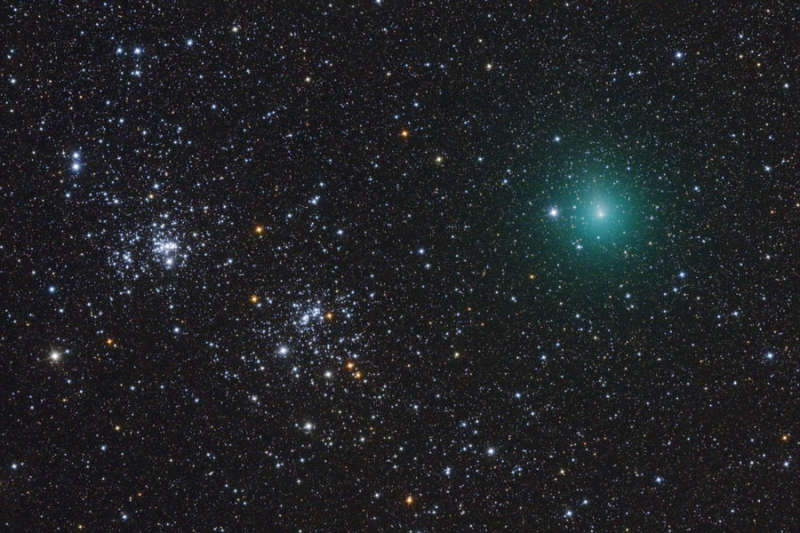Credit & Copyright: Ivan Eder
Explanation:
Most star clusters are singularly impressive.
Open clusters NGC 869 and NGC 884,
however, are doubly impressive.
Also known as "h and chi Persei", this unusual
double cluster, shown above, is bright enough to be seen from a
dark location without even
binoculars.
Although their discovery surely predates
written history, the Greek astronomer
Hipparchus
notably cataloged the
double cluster.
The clusters are over 7,000 light years distant toward the
constellation
of Perseus,
but are separated by only hundreds of light years.
Captured earlier this month, the bright comet
103P/Hartley,
informally called Comet
Hartley 2,
passed well in front but only a few degrees away from the famous double cluster.
Comet Hartley 2, visible on the right,
is now fading but
still discernable to northern observers with binoculars.
No binoculars are needed, of course, if you go right up to the
comet's nucleus, as is the plan for NASA's
EPOXI
spacecraft on November 4.
1999 2000 2001 2002 2003 2004 2005 2006 2007 2008 2009 2010 2011 2012 2013 2014 2015 2016 2017 2018 2019 2020 2021 2022 2023 2024 2025 |
Yanvar' Fevral' Mart Aprel' Mai Iyun' Iyul' Avgust Sentyabr' Oktyabr' Noyabr' Dekabr' |
NASA Web Site Statements, Warnings, and Disclaimers
NASA Official: Jay Norris. Specific rights apply.
A service of: LHEA at NASA / GSFC
& Michigan Tech. U.
|
Publikacii s klyuchevymi slovami:
Perseus cluster - open cluster - comet - Rasseyannoe skoplenie - skoplenie perseya - komety
Publikacii so slovami: Perseus cluster - open cluster - comet - Rasseyannoe skoplenie - skoplenie perseya - komety | |
Sm. takzhe:
Vse publikacii na tu zhe temu >> | |
